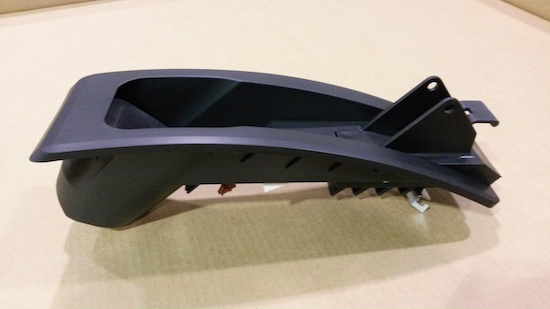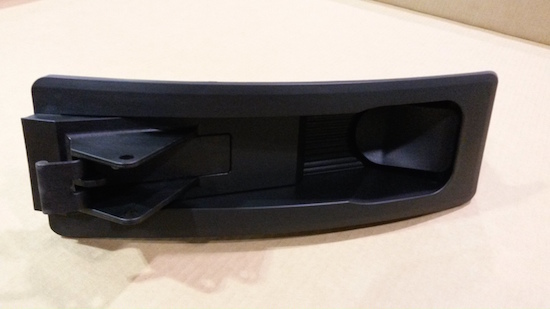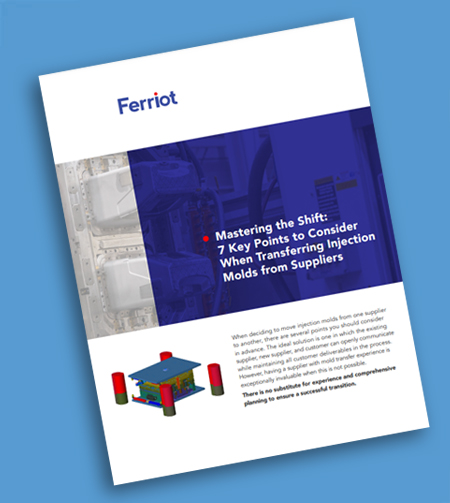 In today’s world of manufacturing and new product development, the need for fast-paced production and the existence of complex designs is greater than ever. Historically, manufacturers have depended on metal due to an existing wealth of metal knowledge, it’s strength and stiffness, perceived quality, and ideal properties related to electricity, UV performance, and chemical resistance. However, due to a fluctuating economy, high cost of goods, and smaller margins, the need for materials that can reduce weight, cost, and production time is huge.
In today’s world of manufacturing and new product development, the need for fast-paced production and the existence of complex designs is greater than ever. Historically, manufacturers have depended on metal due to an existing wealth of metal knowledge, it’s strength and stiffness, perceived quality, and ideal properties related to electricity, UV performance, and chemical resistance. However, due to a fluctuating economy, high cost of goods, and smaller margins, the need for materials that can reduce weight, cost, and production time is huge.
Although metal-to-plastic conversion has been around for decades, many manufacturers, Commodity Managers, and engineers aren’t familiar with the benefits. With proper design, engineered plastics and high performance resins can be just as strong as metal. According to the American Society of Mechanical Engineers, “in general, companies can expect to achieve an overall cost savings of 25% to 50% by converting to plastic parts.
Key Factors that Drive Metal Replacement
There are many factors that drive metal replacement, however the main three include:
- Reduced systems cost
- Improved performance
- Product differentiation
 When beginning the process of determining if metal replacement is the right move, we typically recommend utilizing DFMA (Design for Manufacture and Assembly) – a systematic approach for evaluating and generating product designs for ease of assembly and manufacture. The best time to use DFMA is when it can influence the conceptual stages of a product. For example, is there a potential for parts consolidation? Are there quality or ergonomic issues? Are the current assembly operations too complex or expensive? These are all important questions that help ensure you are taking a systems-solution approach, which is critical for successful plastic-to-metal conversion.
When beginning the process of determining if metal replacement is the right move, we typically recommend utilizing DFMA (Design for Manufacture and Assembly) – a systematic approach for evaluating and generating product designs for ease of assembly and manufacture. The best time to use DFMA is when it can influence the conceptual stages of a product. For example, is there a potential for parts consolidation? Are there quality or ergonomic issues? Are the current assembly operations too complex or expensive? These are all important questions that help ensure you are taking a systems-solution approach, which is critical for successful plastic-to-metal conversion.
9 Benefits of Metal-to-Plastic Replacement
Plastics have been highly successful in replacing traditional materials in applications where they can provide value through improved performance at lower systems cost. Here are some of the benefits of replacing metal parts with plastic ones:
- Weight reduction: plastics yield lower density and are about six times lighter than zinc. Less weight leads to ease of use and better gas mileage, resulting in cost savings for both parts and raw materials.
- Parts consolidation: plastics allow for reduced part count and inventory through redesign. Oftentimes, a single injection molded part can replace multiple metal pieces.
- Productivity gains: processes like plastic injection molding allow for higher volumes and shorter cycle time conversions.
- Labor savings: plastic requires minimal assembly and, due to in-mold decorating technologies, reduced secondary operations such as welding, painting, and laser marking.
- Safety: plastics are impact resistant, flame resistant, and also non-conductive, which can improve the overall safety of the end product.
- Balance of properties: plastics have a broad spectrum of chemical formulas each having different beneficial traits. Engineering resins are then the blending of these basic resins to provide yet additional optimized properties.
- Re-process (thermoplastics): in some cases, start-up or scrap parts are allowed as regrind for the application or scrap is utilized in other plastics through reprocessing.
- Longer product life: high performance resins are corrosion resistant, which reduces the need for secondary coatings and sprays.
- Design freedom: plastics provide the flexibility to use complex geometry.
In summary, metal replacement is largely driven by system cost reduction. Plastics may offer additional performance advantages, such as weight reduction, impact improvement, and corrosion resistance. The most impactful metal replacement successes typically require a cross-functional team reviewing an entire subsystem, rather than a one-for-one replacement.



